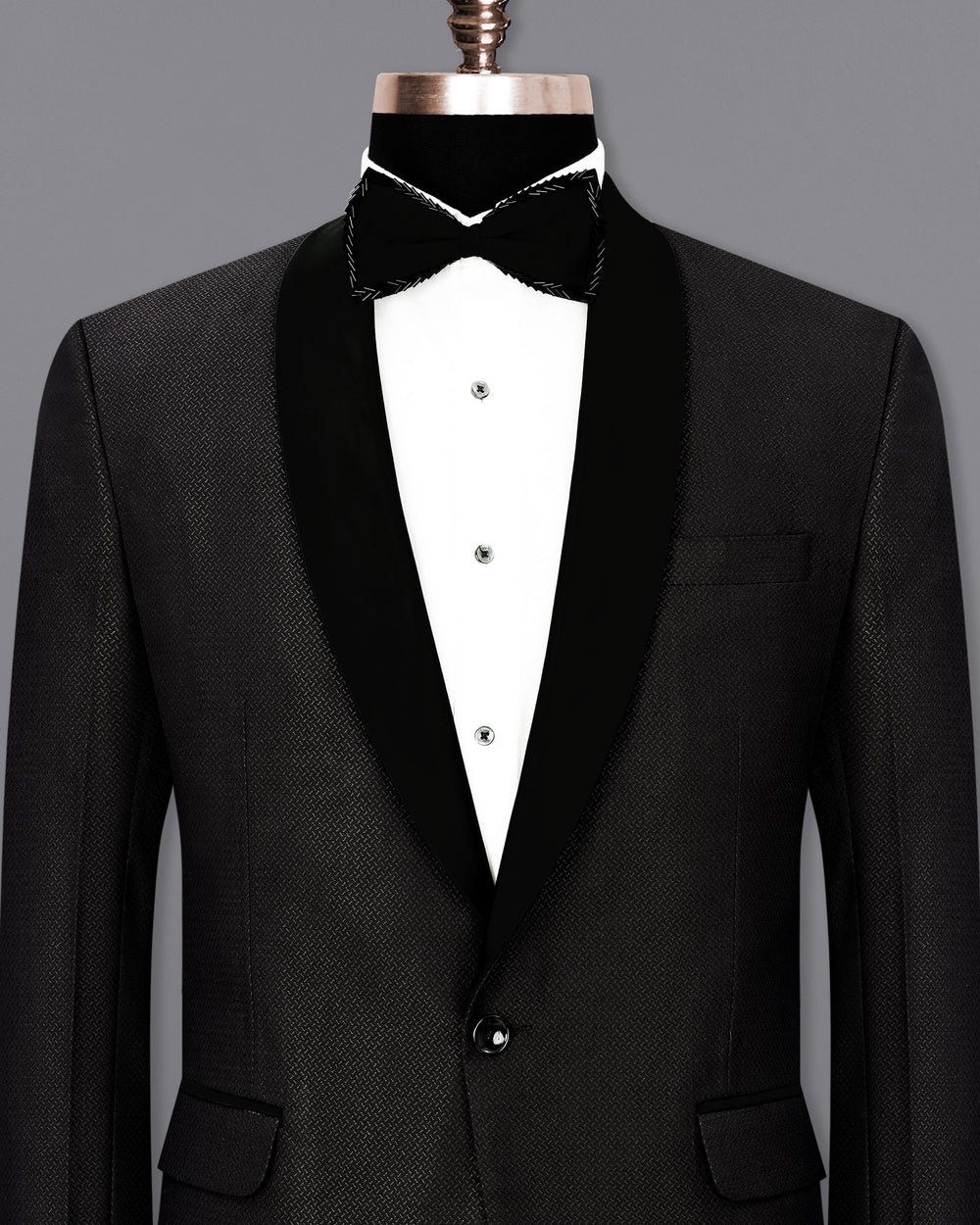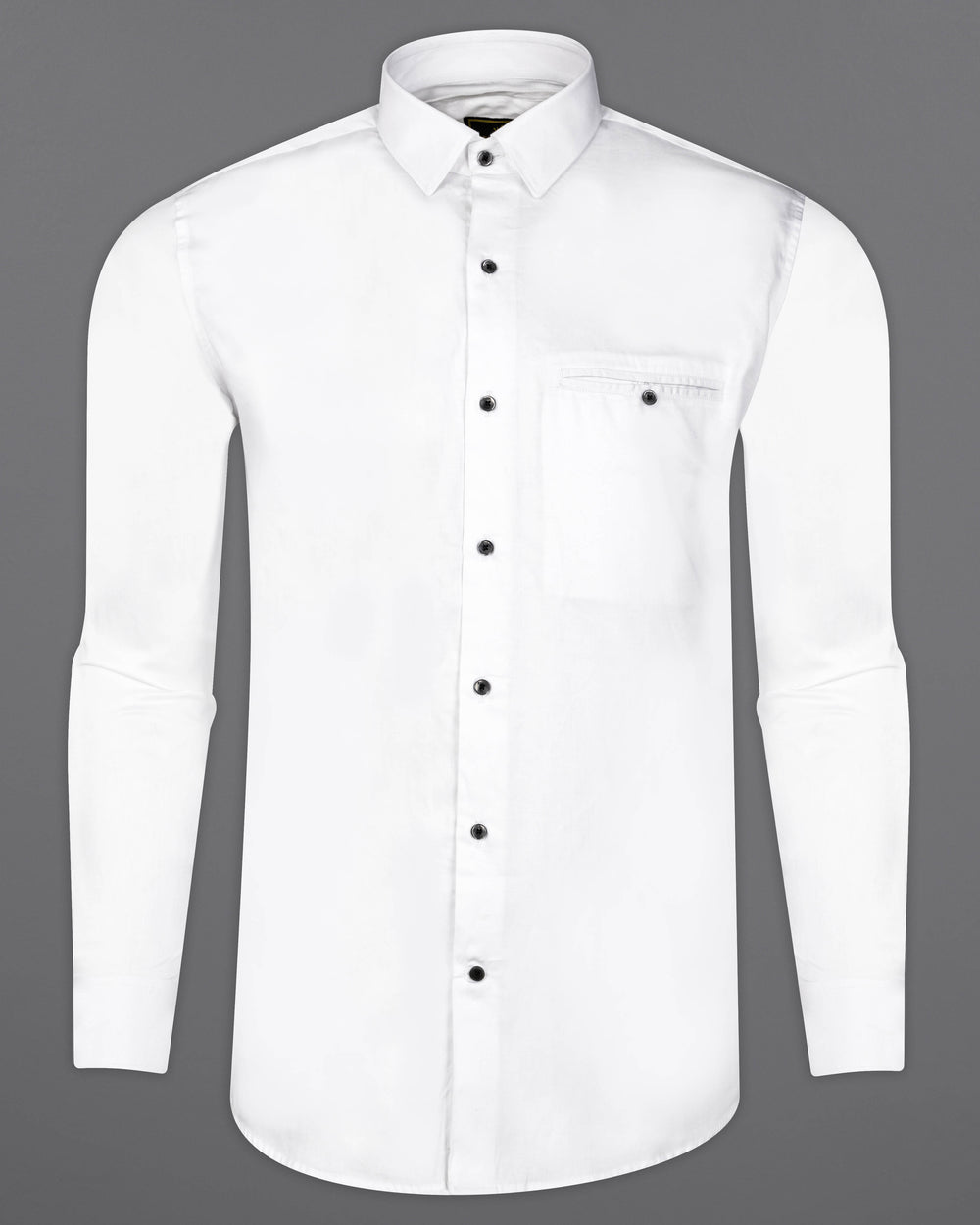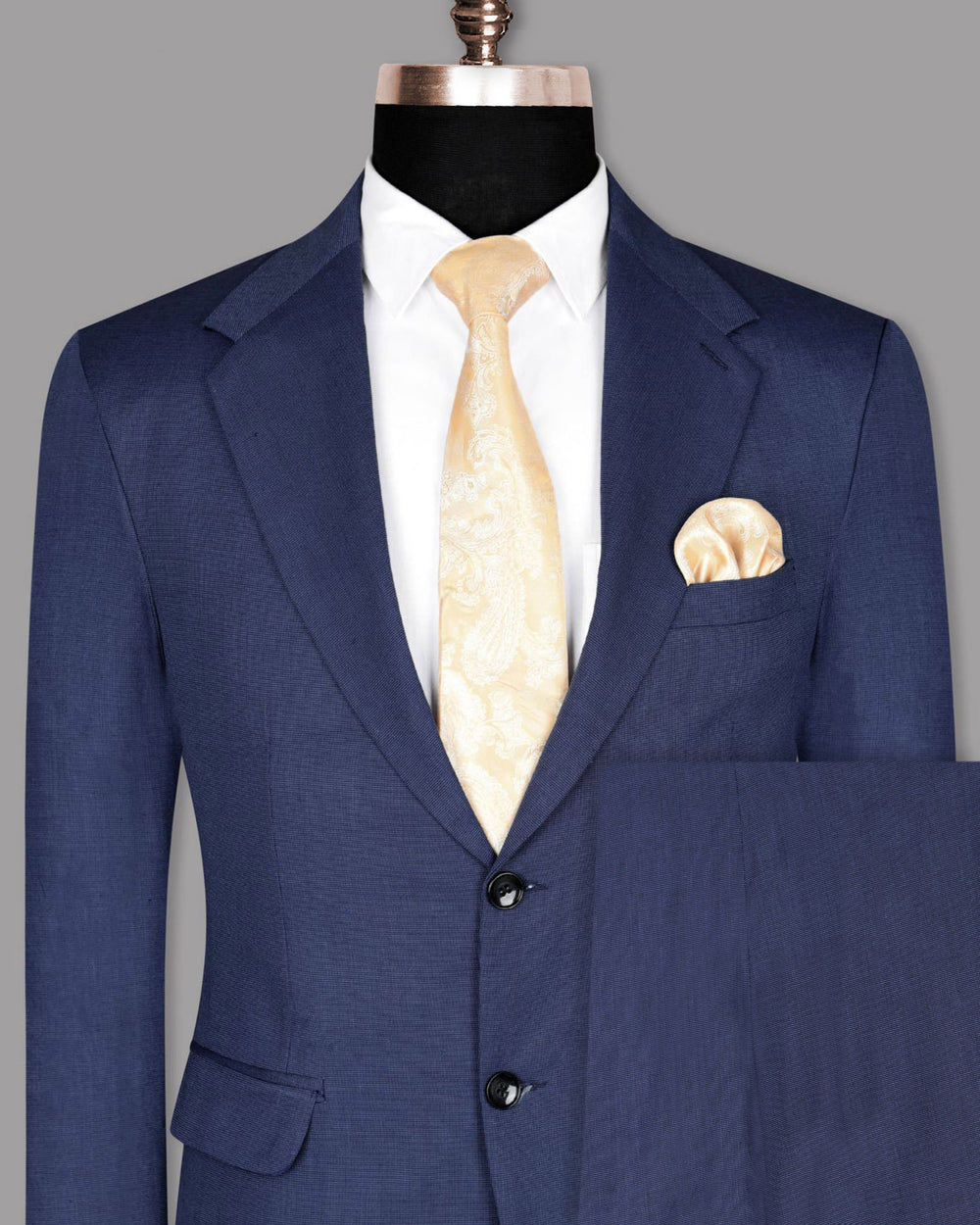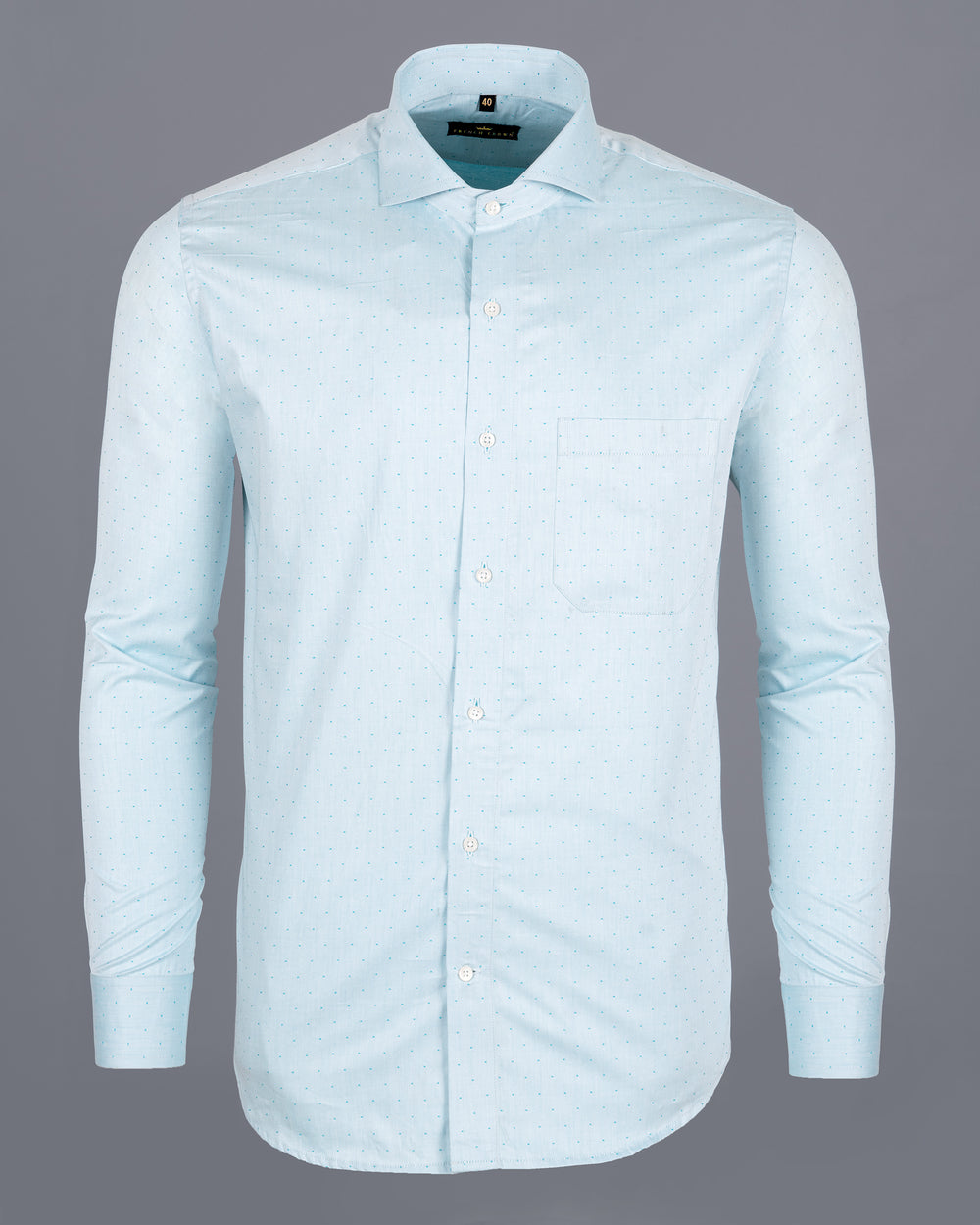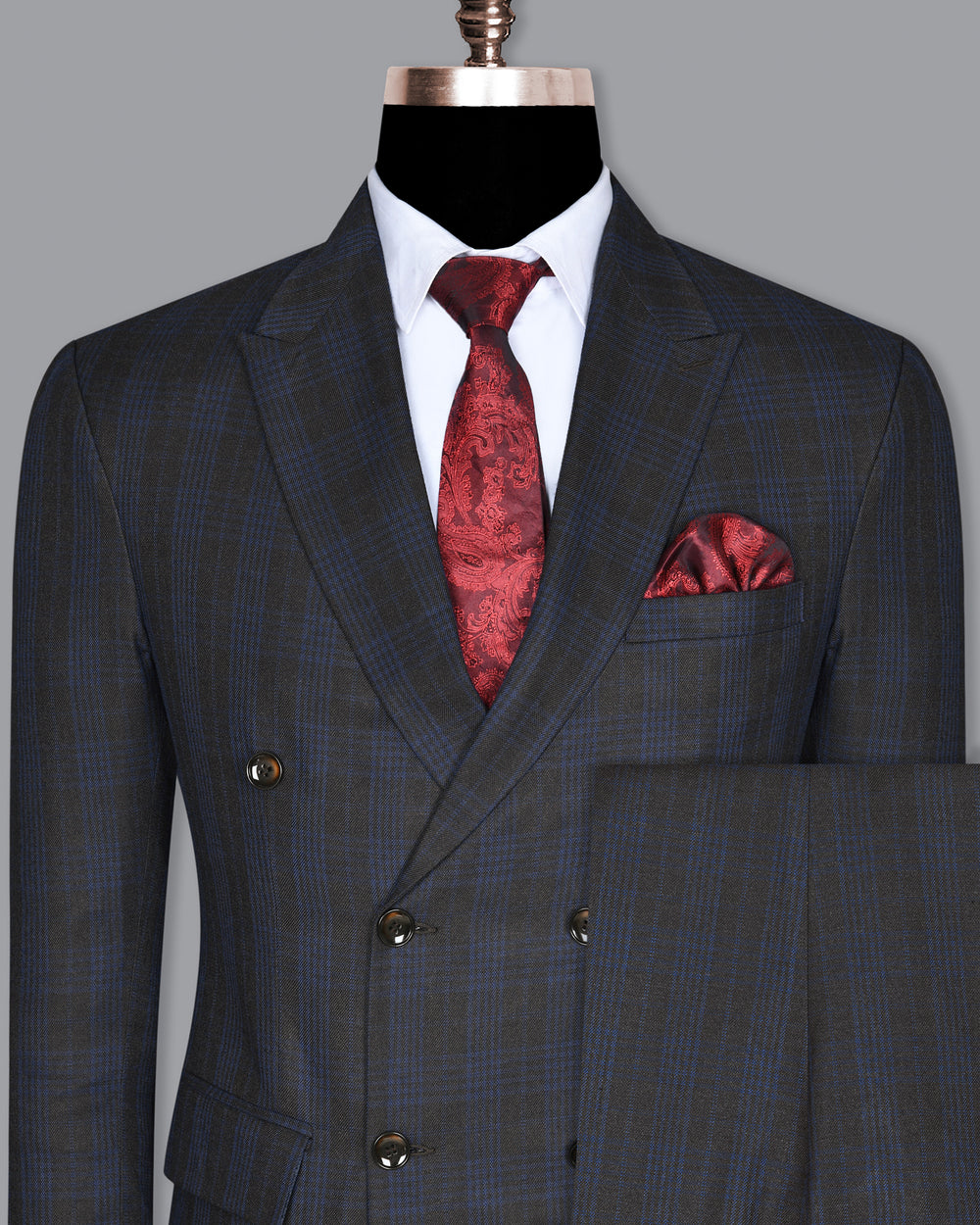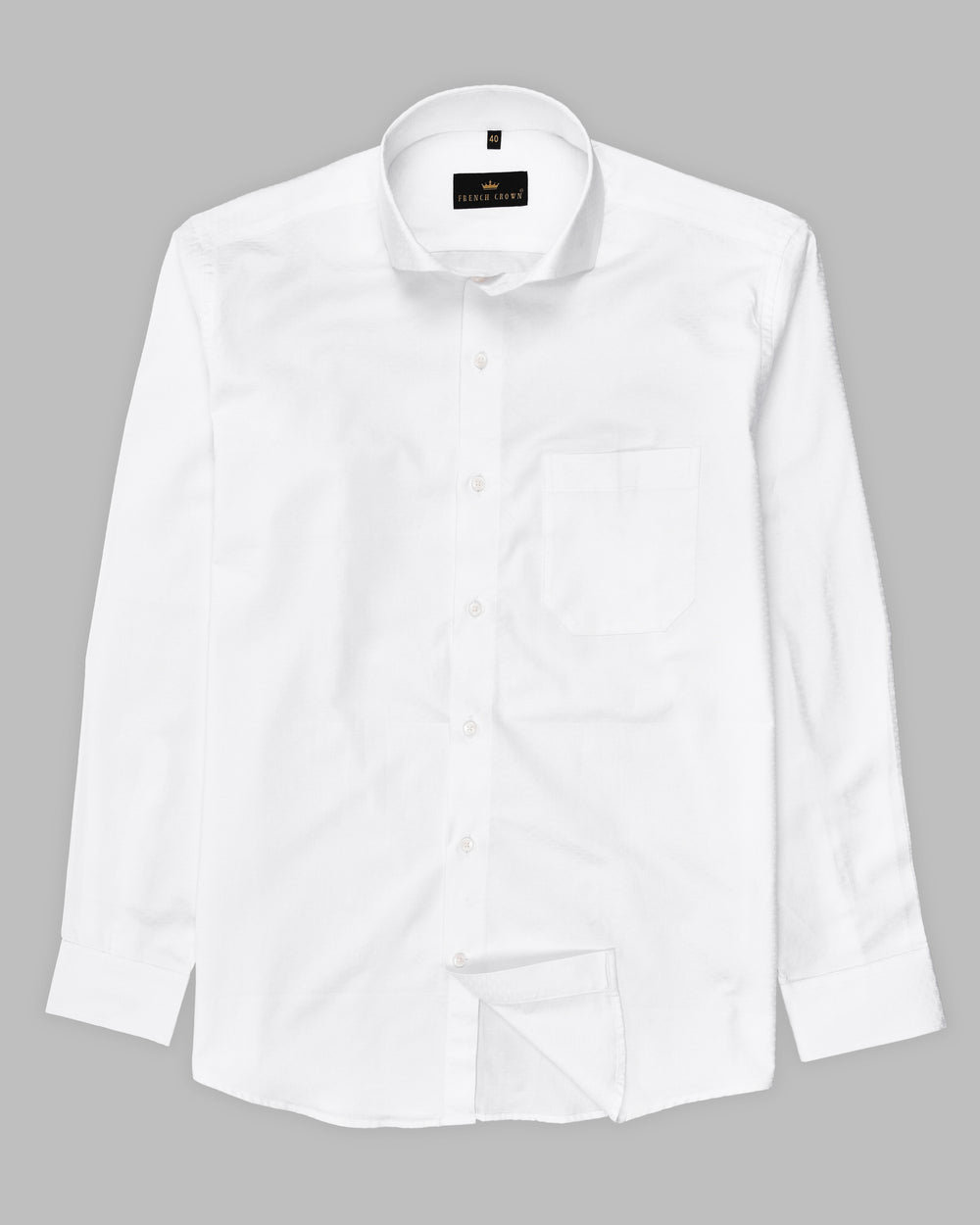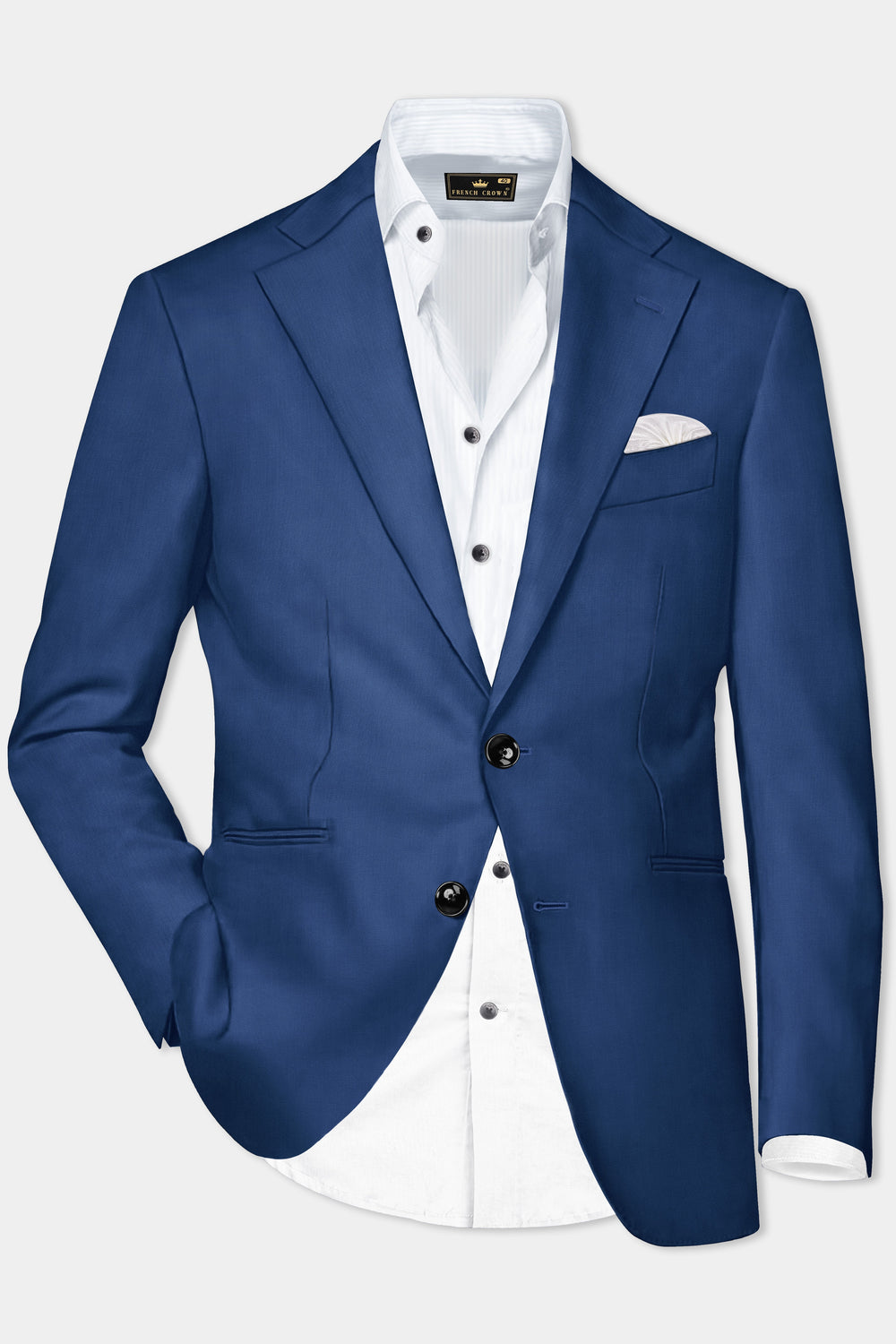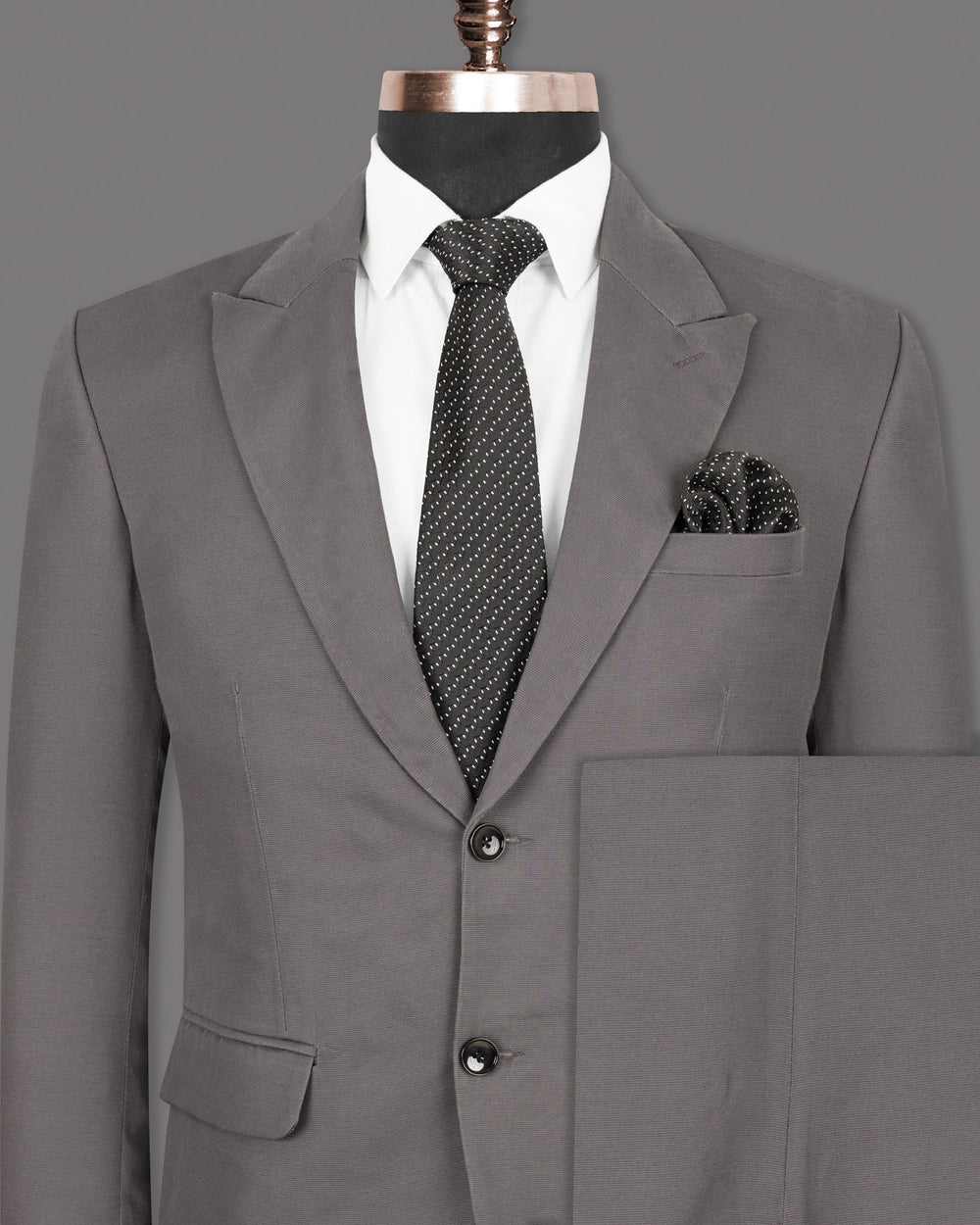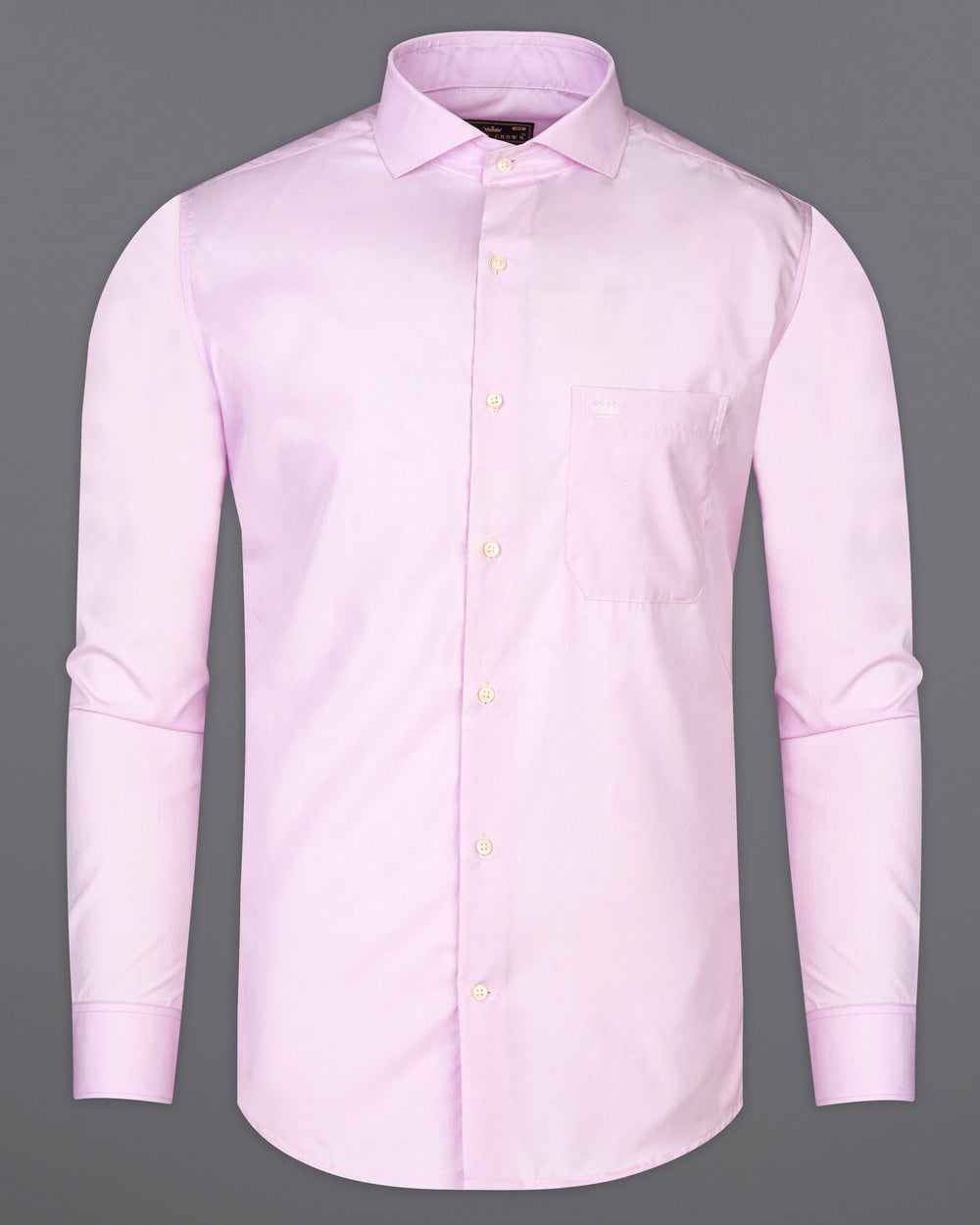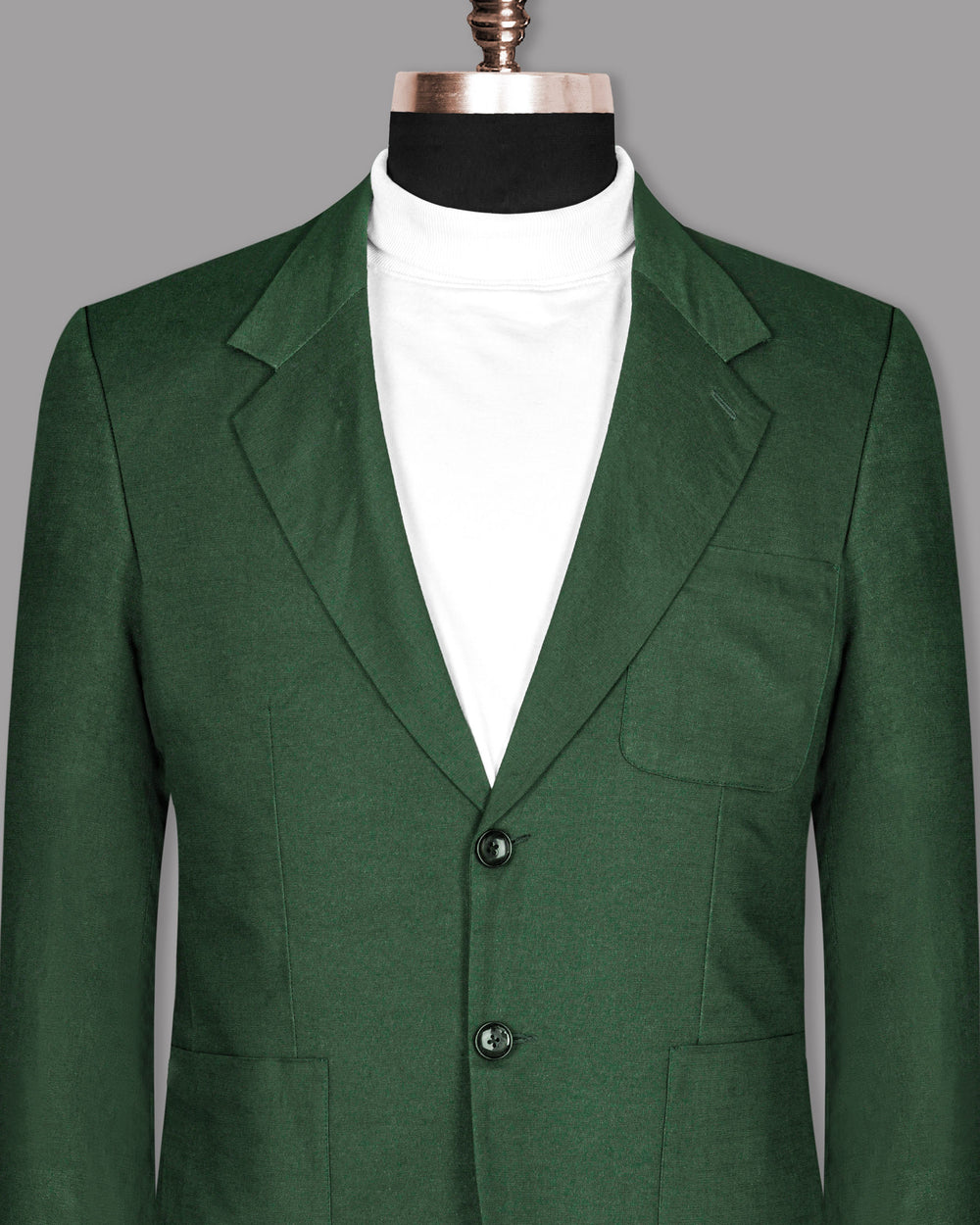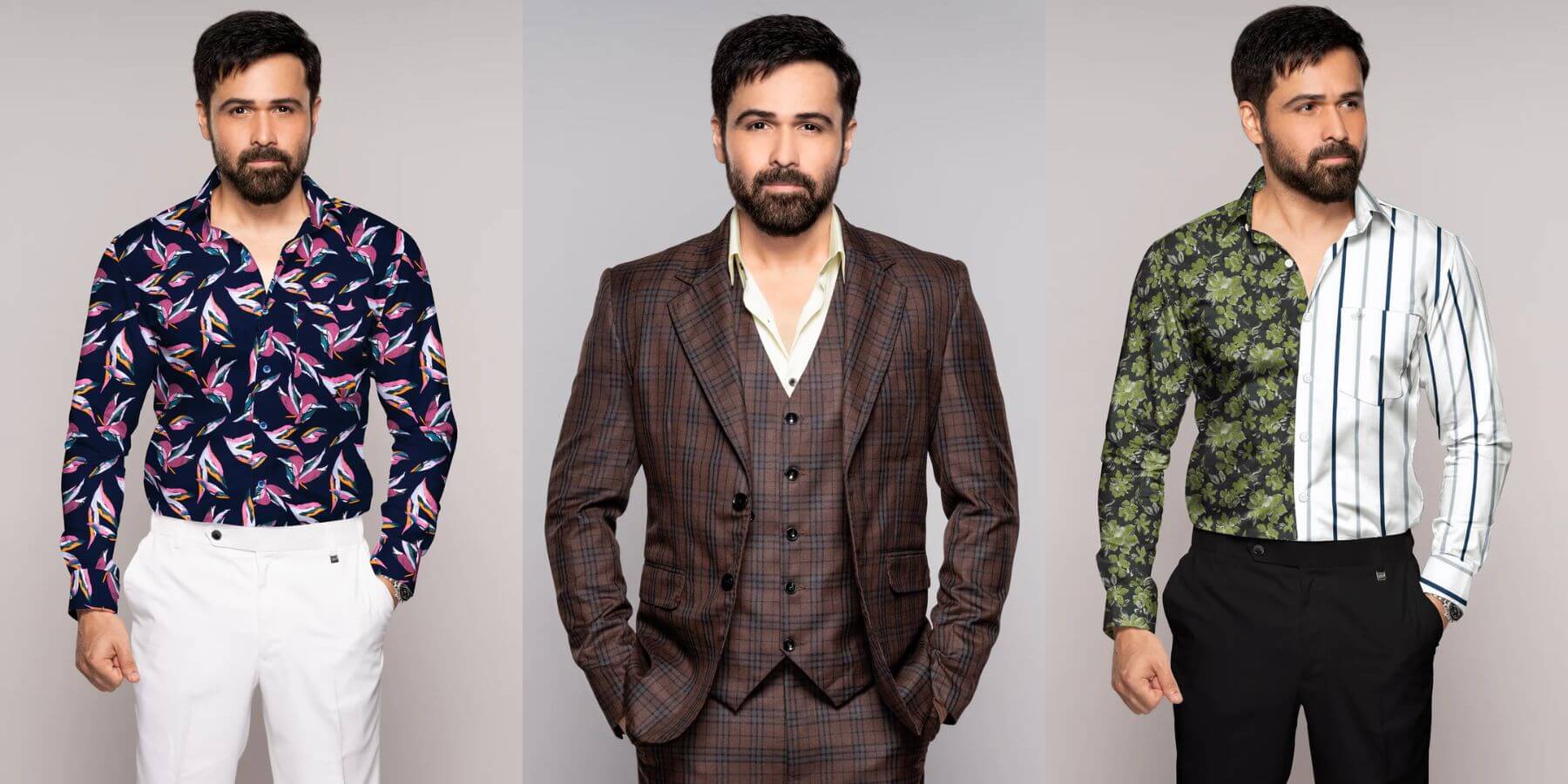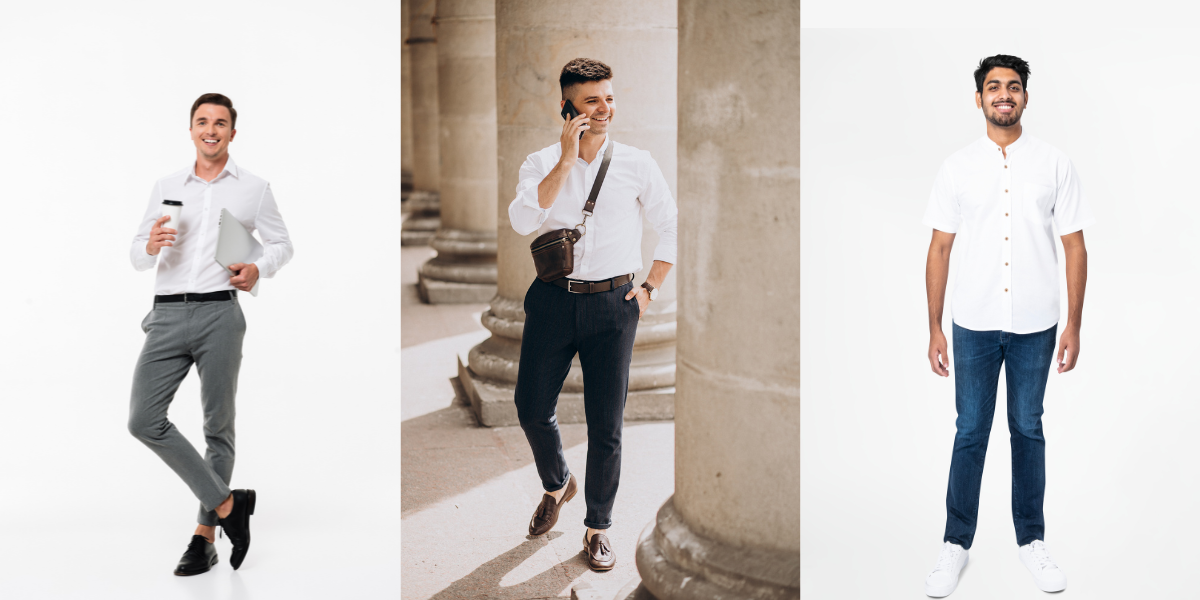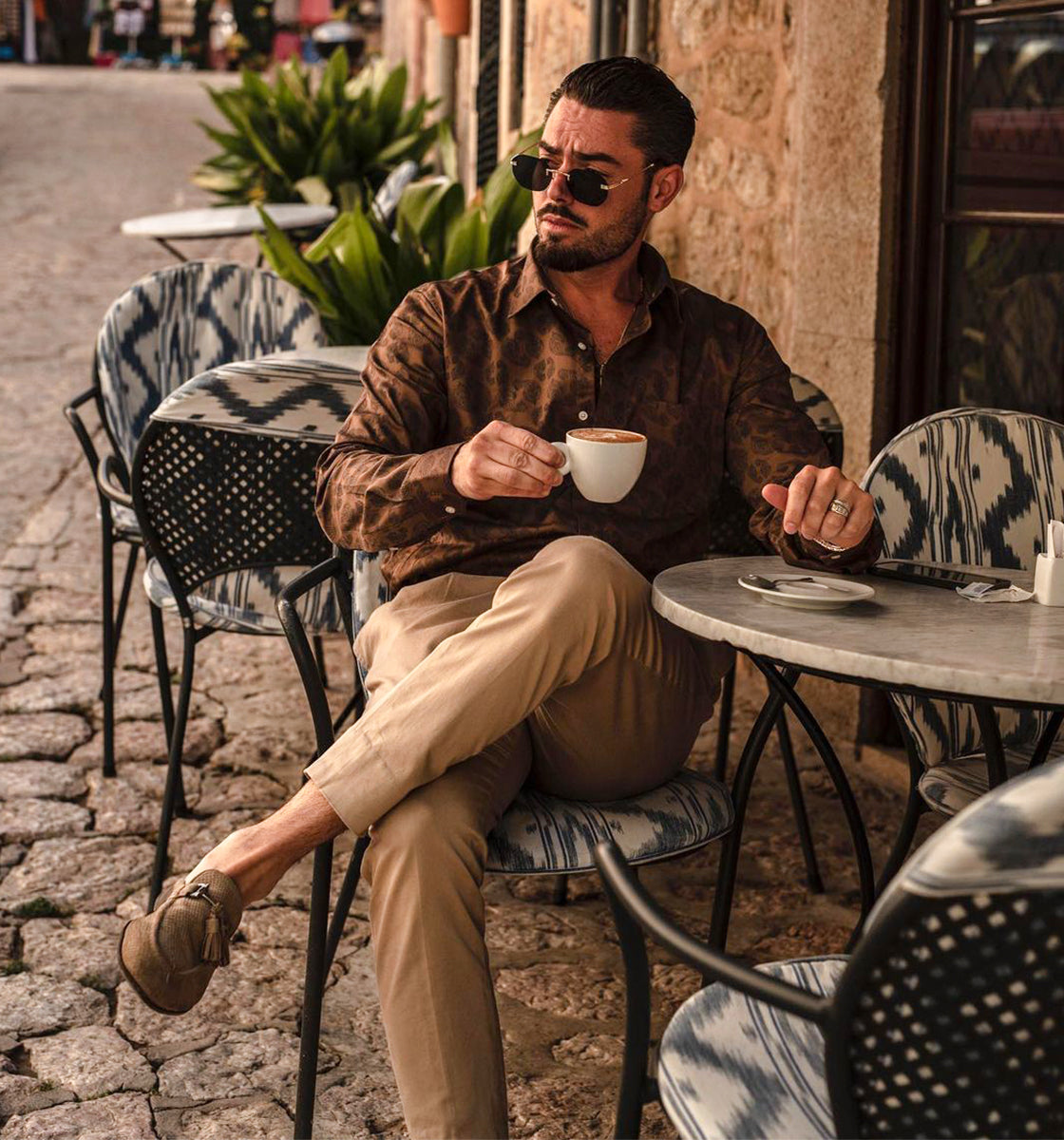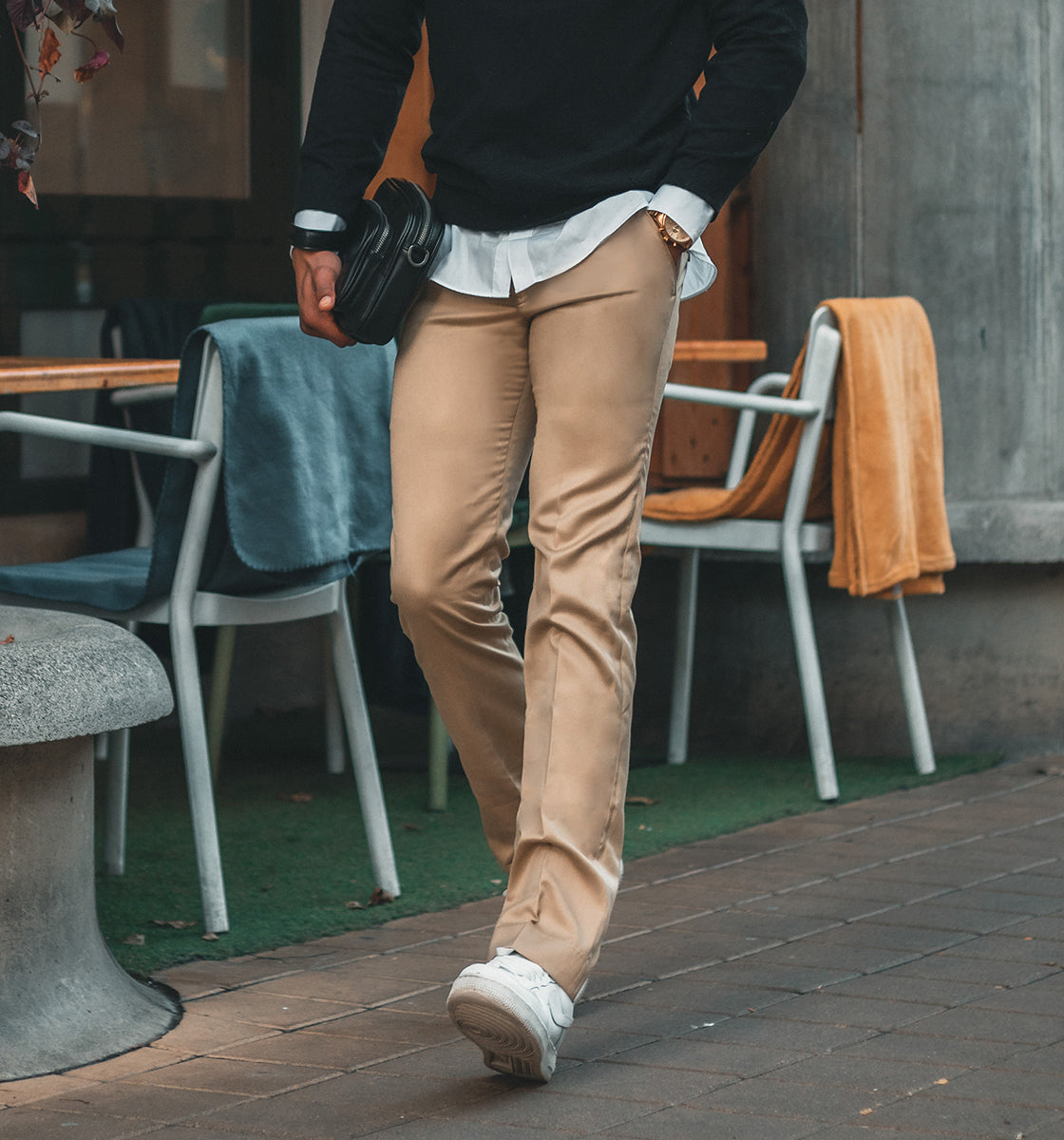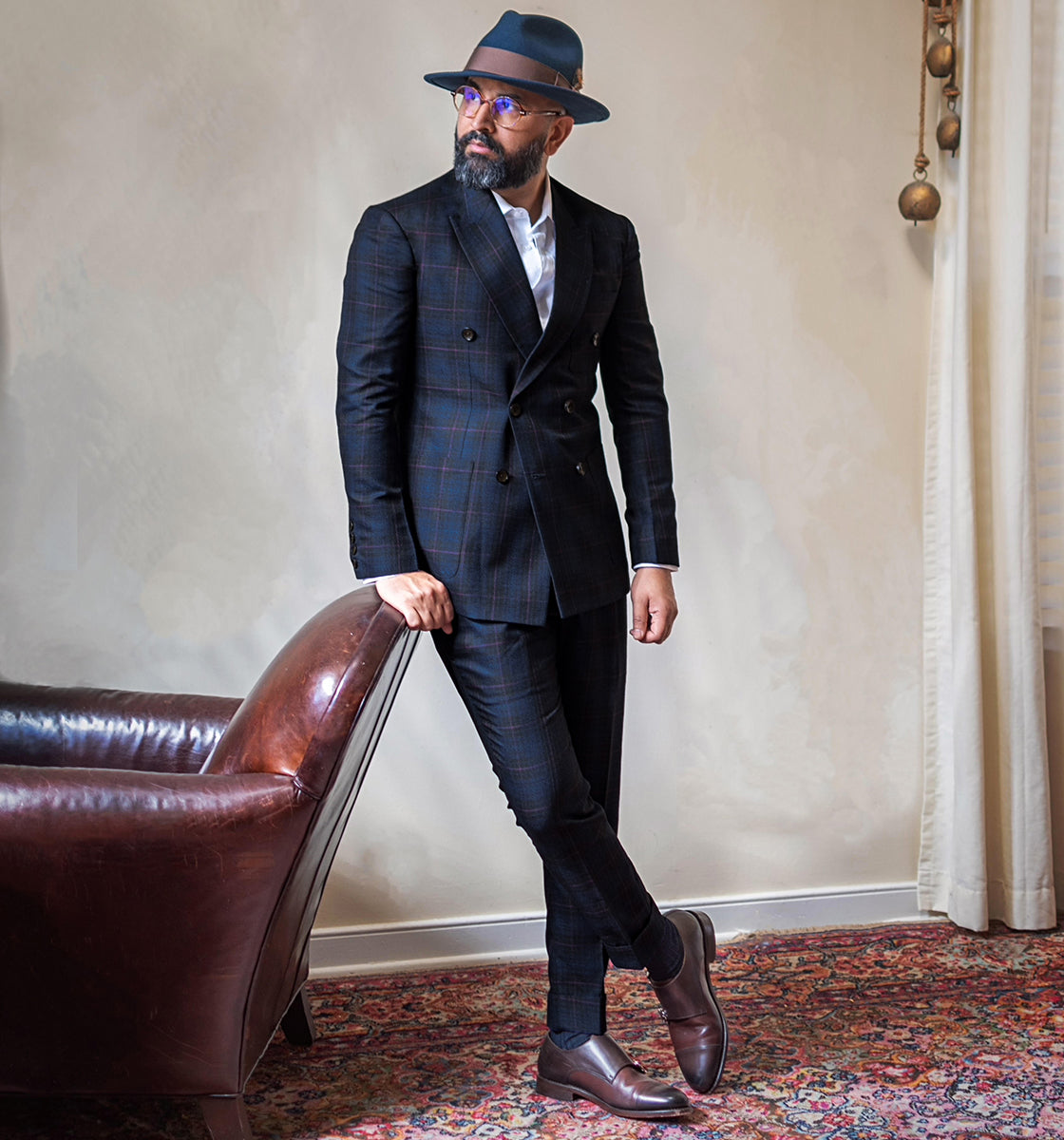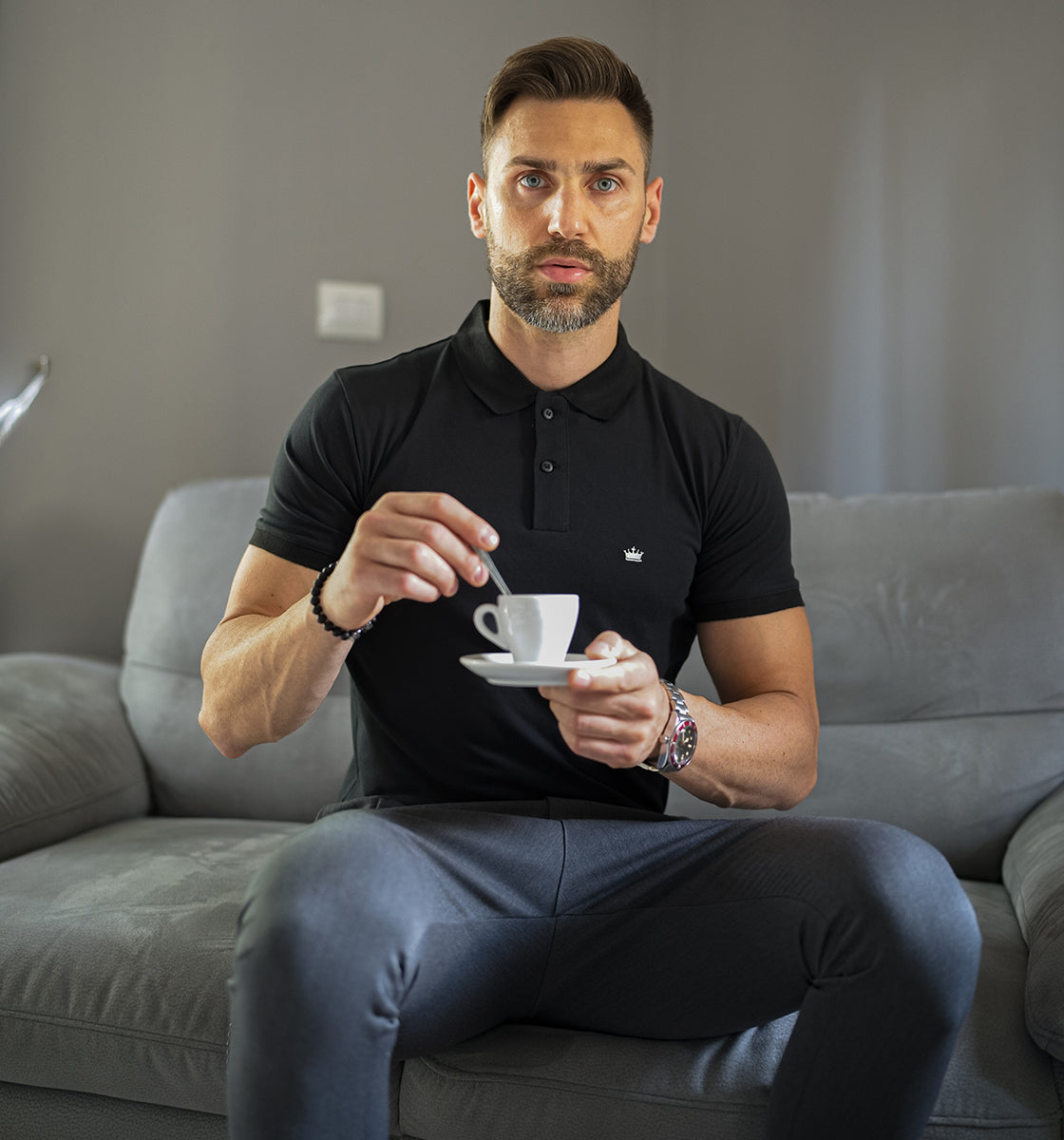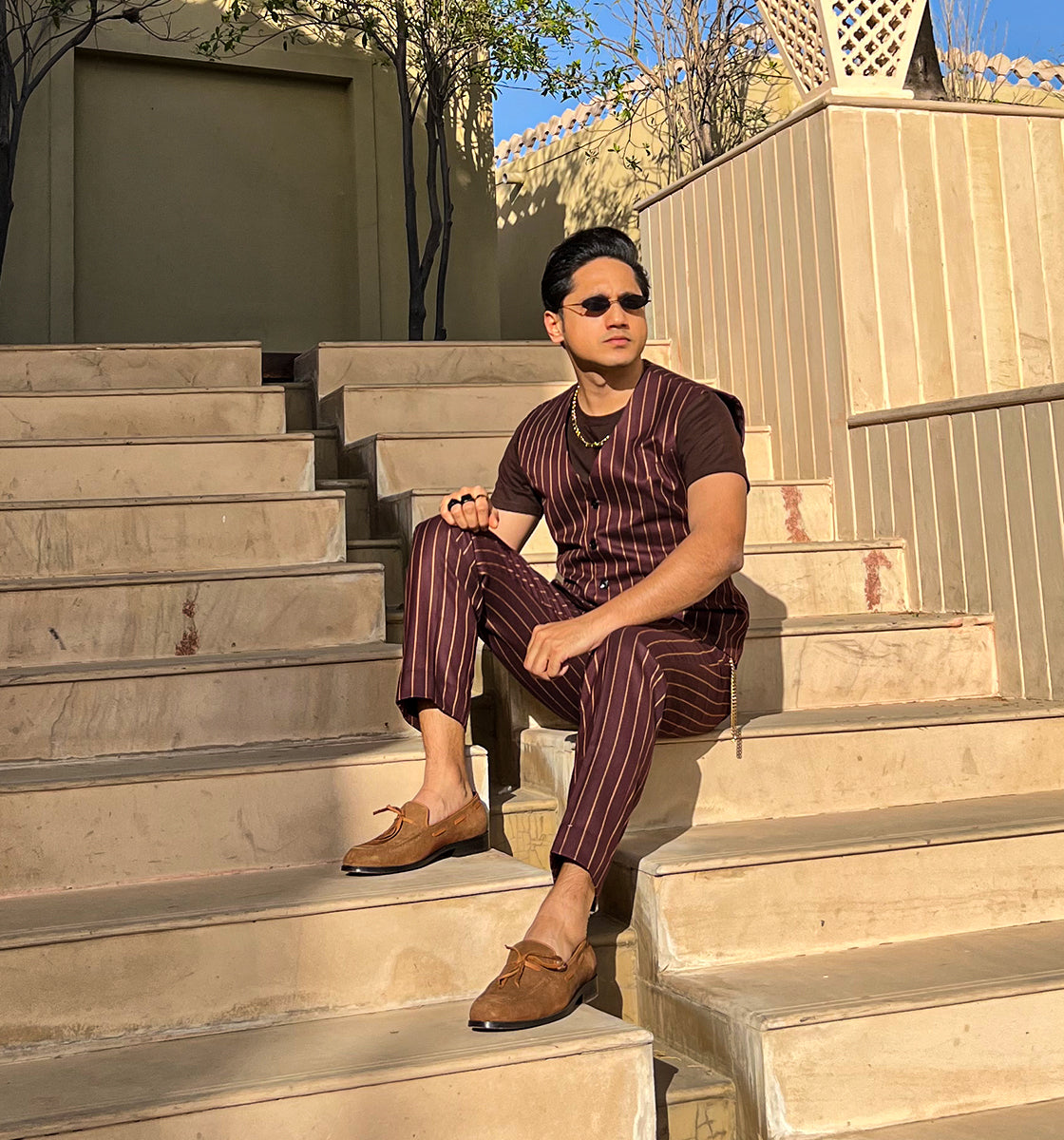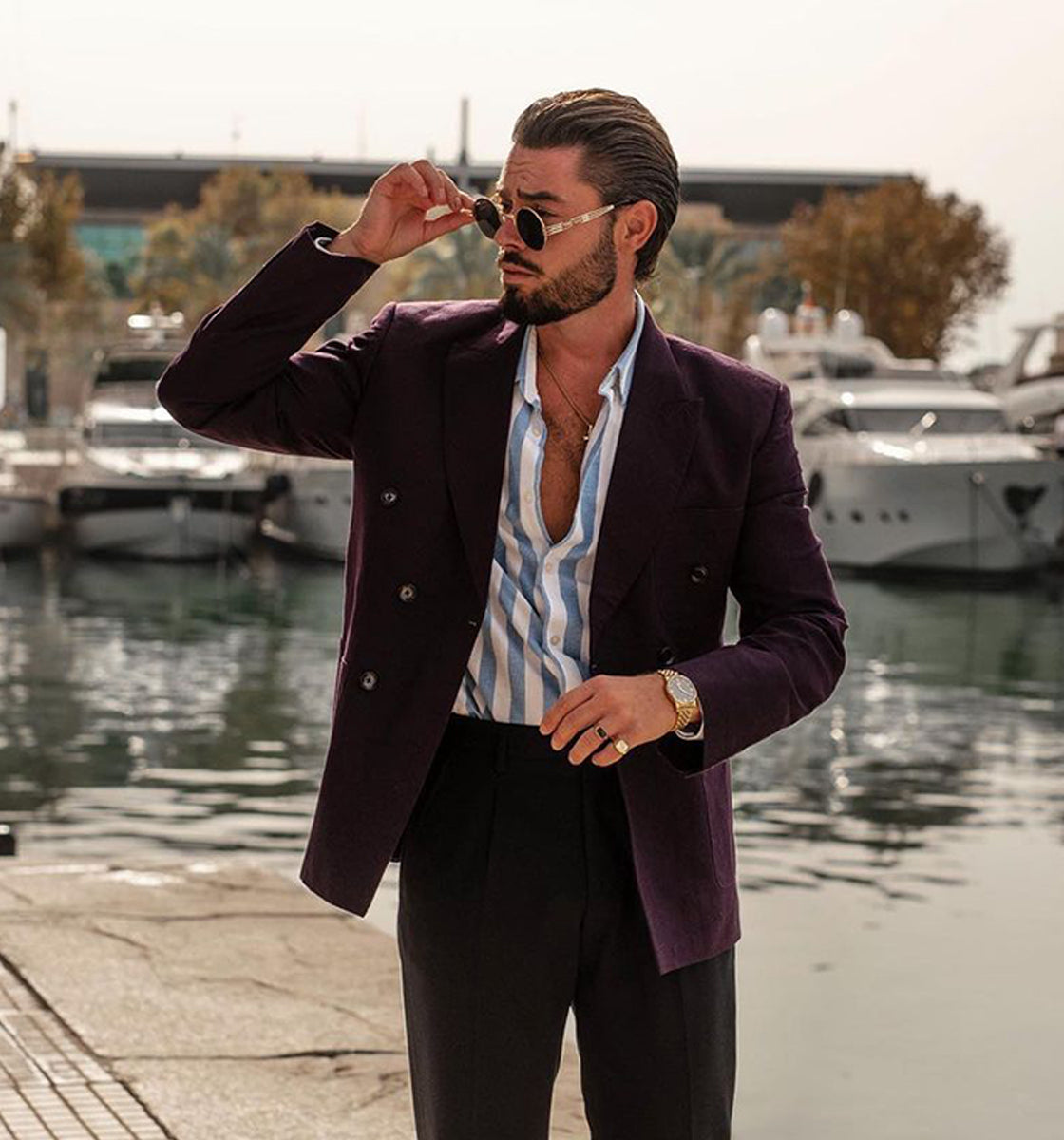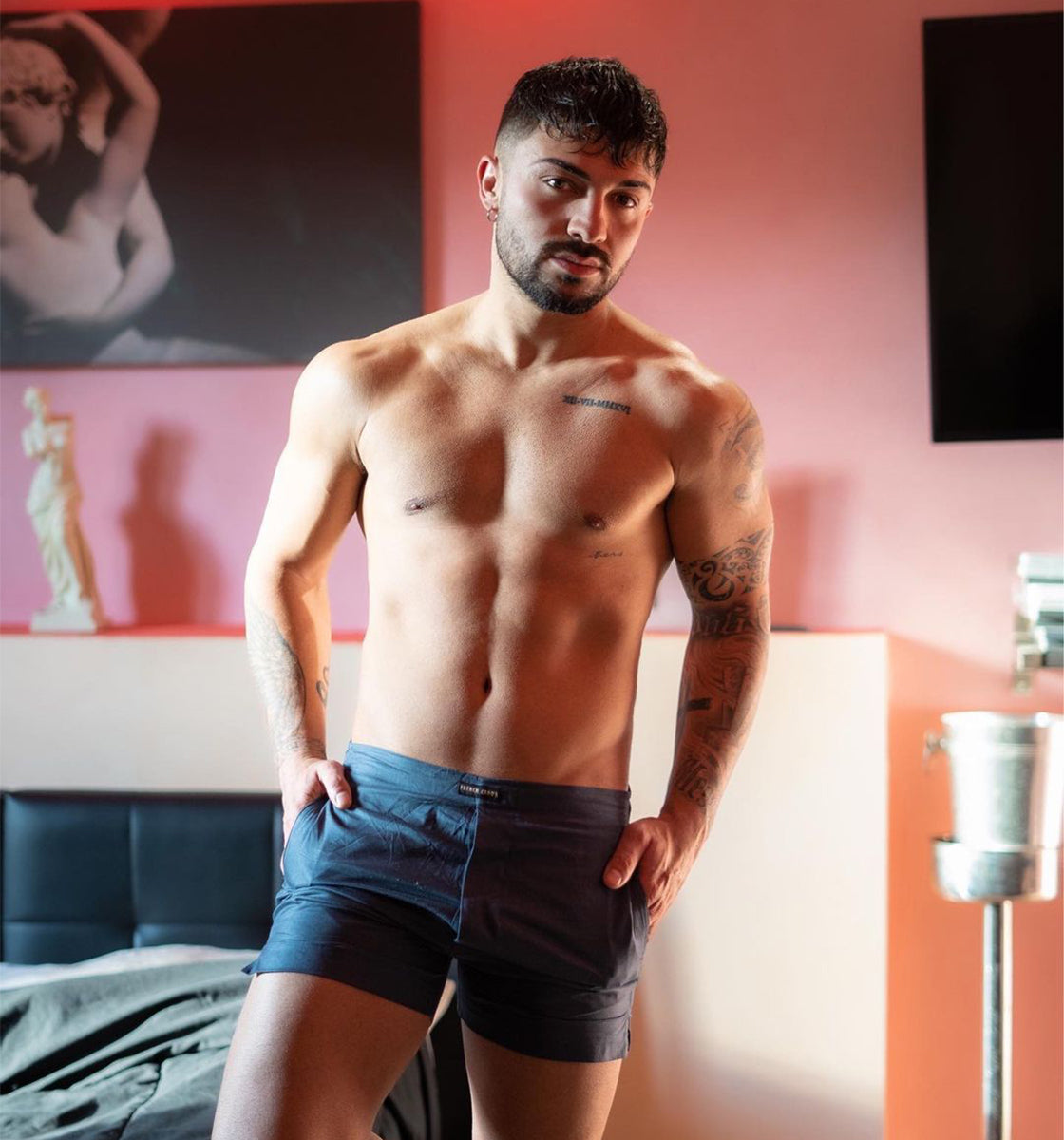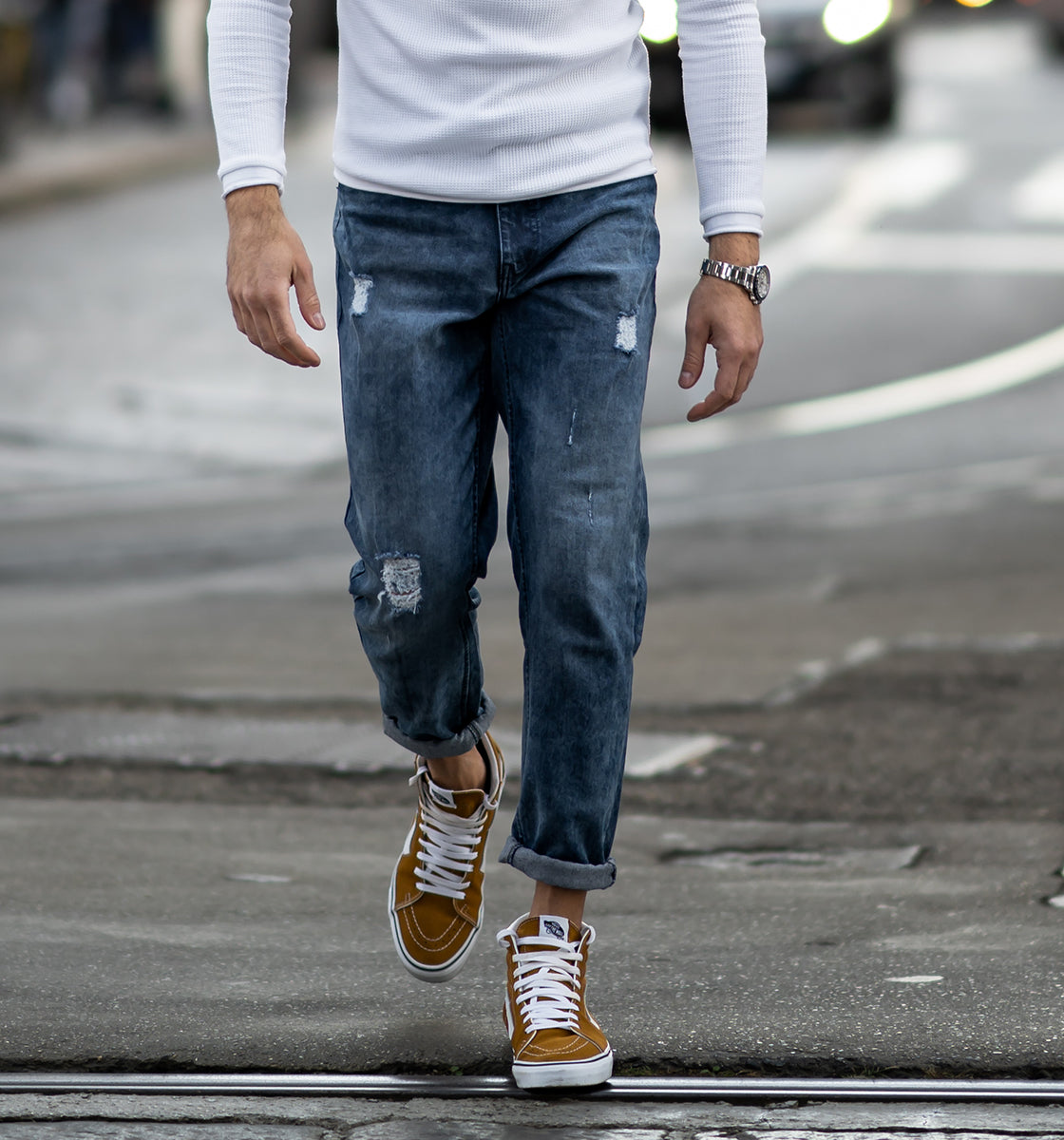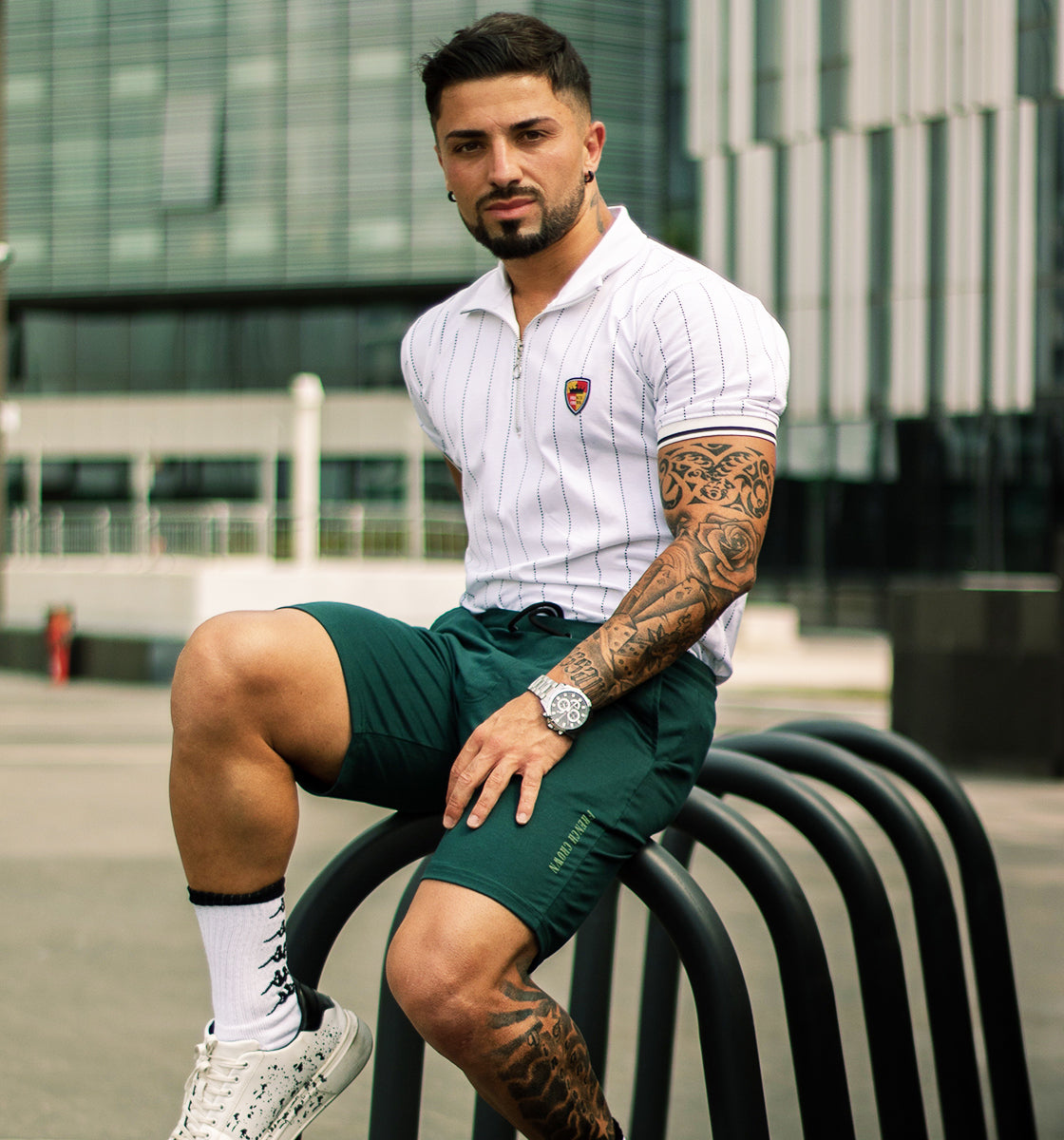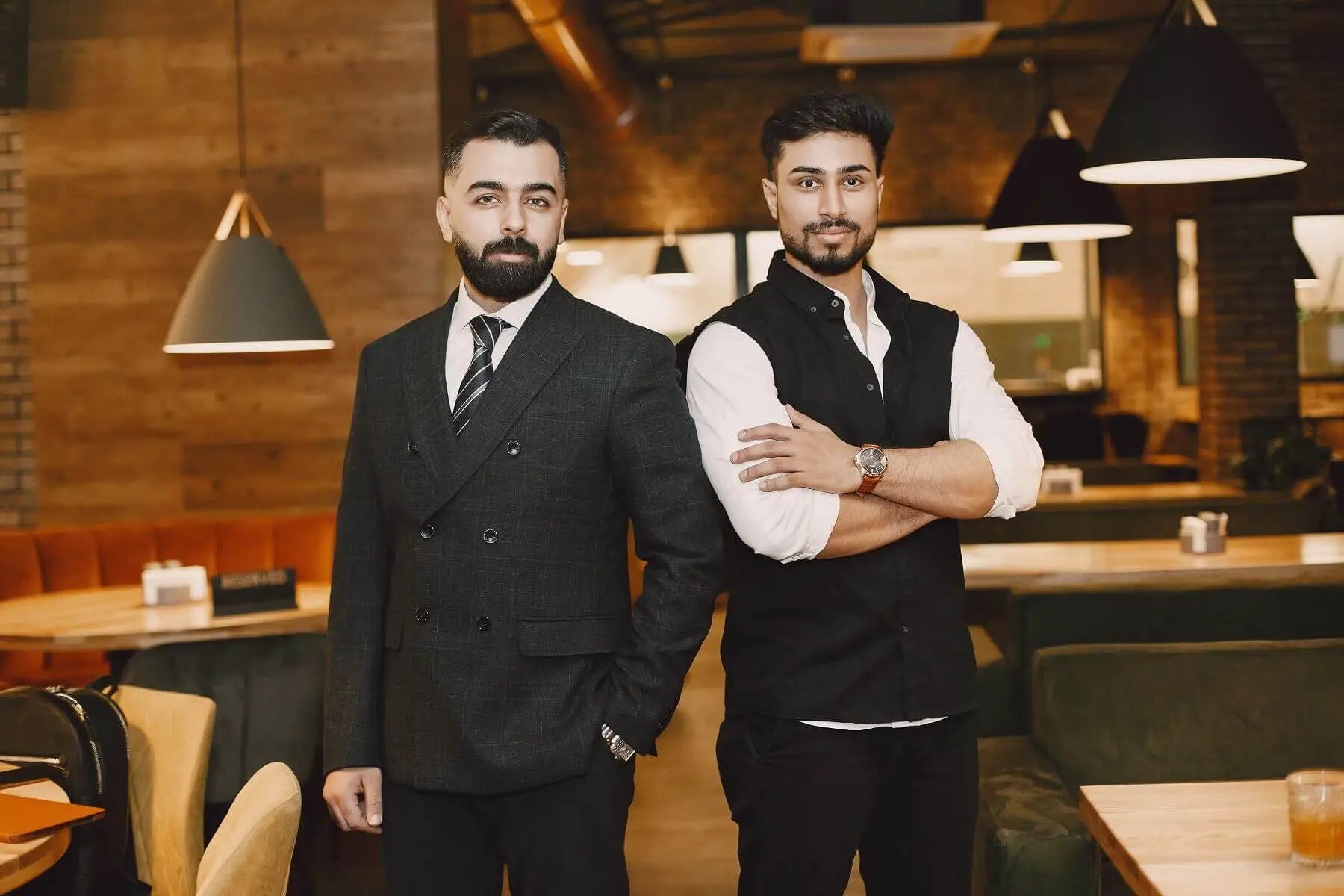
Formal vs Semi-Formal Outfits for Men – What’s the Difference?
Men often are confused between semi-formal vs. formal attire because there is a very thin line between the two! But then, getting dressed shouldn't feel like guesswork.
Thus, this carefully guided blog breaks down the real difference between formal and semi-formal wear for men—what to wear, when and how to style it with confidence.
No confusion, no awkward fits—just clear, evergreen rules to help you dress right for every important occasion.
Table of Contents
- What is a Formal Attire?
- Top 3 Formal Outfit Ideas for Men
- 1. Black Tuxedo and White Shirt Combination
- 2. Blue Suit and Light Blue Shirt Combination
- 3. Charcoal Grey Suit and White Shirt with Spread Collar
- What is a Semi-Formal Attire?
- Top 3 Semi-Formal Outfit Ideas for Men
- Key Differences Between Semi-Formal and Formal Attire
- Shopping Tips & Recommendations: Semi-Formal vs. Formal Dress Code for Men
What is a Formal Attire?
Rooted in centuries of sartorial evolution, the formal attire for men embodies elegance and tradition. Since the 19th-century European aristocracy, it has signified status and decorum. For men, this later translated to tailored suits, crisp formal shirts, and refined accessories.
The black tuxedo suits, introduced in the late 1800s, became a symbol of professionalism. Later, the blue suits and grey suits became versatile choices for various formal occasions.
Today, formal wear balances classic elements with contemporary nuances. This is allowing individuals to express personal style within established norms.
Whether attending a gala, wedding or business events, formal attire for men communicates respect, enthuses confidence and creates an automatic appreciation for timeless fashion.
Top 3 Formal Outfit Ideas for Men
1. Black Tuxedo and White Shirt Combination
As formal dress for men, this has been a necessary attire since its 1886 debut at the Tuxedo Club in New York.
It was then an epitome of evening elegance. Ideal for black-tie events, it has those stark satin lapels and well structured silhouette that’s extraordinary poise in men’s outfits.
This men’s ensemble is always favored by celebrity icons from Hollywood to Bollywood! You can pair this tuxedo blazer with a black bow tie and patent leather shoes.
Silver cufflinks and a classic pocket square are timeless accessories that go with this combo.
2. Blue Suit and Light Blue Shirt Combination
The blue suit's lineage traces back to 17th-century England. But it gained prominence in the 19th century as a symbol of formal vs semi-formal dress codes for men.
Its association with the British Royal Navy further cemented its status as a formal dress code. For modern occasions—be it business meetings or daytime weddings—you must pair a navy or royal blue suit with a light blue shirt.
A patterned tie, brown leather shoes and a coordinating belt will add the perfect accessorial elements to it.
This combination offers a fresh, approachable take on formal attire.
3. Charcoal Grey Suit and White Shirt with Spread Collar
Emerging in the mid-19th century, the charcoal grey suit became a mainstay in men's wardrobes. It is associated with symbolising authority and refinement. Its neutral tone offers versatility.
No wonder it comes in handy when you have to think between formal vs semi-formal dress code for men. For both corporate settings and formal events, you can style this combination with a crisp white shirt featuring a spread collar.
If you wish you can also don a deep burgundy tie. For shoes, the black leather oxfords or brogues are the best.
If going for a wedding, you can accentuate with a silver tie clip and a matching watch.
What is a Semi-Formal Attire?
Now, coming down to what is considered semi-formal attire for a man? Semi-formal is about effort without extravagance. When you talk of semi-formal vs formal attire, the latter is the space between everyday casual and formal suits.
It requires structured clothing—blazers, tailored trousers, and semi-formal shirts. But then it has no jeans, no sneakers. Events like engagement parties, business dinners, or gallery openings are the perfect answer to men’s semi formal vs formal in weddings and business meetings.
Here, the shirts must be collared, tucked, and cleanly pressed. But then, instead of blazers, you can have jackets that should fit the shoulders properly.
Trousers should hold their shape but never look stiff like a formal dress code. Shoes have to be closed-toe leather only. Avoid flashy prints or too many accessories.
Top 3 Semi-Formal Outfit Ideas for Men
1. Semi-Formal Outfit Idea: Navy Blazer, Light Blue Shirt & Beige Pants
This is a balanced, neutral look. The navy blazer gives structure and seriousness. Light blue softens the palette—ideal for daytime events, client meetings, or professional brunches.
Beige chinos keep the outfit grounded and seasonal. Match with brown leather loafers and a slim belt. No tie is needed.
You can add a patterned pocket square for texture, but keep it subtle. Glasses should be thin-framed, shoes polished, and grooming sharp.
This outfit works in warm months and bright settings. Avoid black shoes—they’re too formal for this mix.
2. Light Grey Suit and Pink Shirt Combination
How to convert this into semi formal attire vs formal? Pink shirts must be slim-fit and ironed. Stick to tan or camel-colored shoes—oxfords or brogues work. Avoid patterns.
The tie is optional but should be matte or knit. Watch faces should be silver or white. Avoid dark accessories; keep the look soft.
Always button the jacket when standing. This grey suit and pink shirt combination is best for daytime weddings, corporate receptions or high-end lunches.
Also Read: Pink Shirt Matching Pants For Men To Look Dashing
3. Olive Green Blazer with White Shirt and Slim-Fit Navy Denim Jeans
This is smart-casual done right when you ask us for formal and semi-formal outfit ideas for men for a first-time date night or to see her parents! The olive green blazer is rich but versatile.
It pairs well with clean white—choose a firm-collar cotton shirt. Slim dark denim adds sharpness—never wear faded or distressed jeans here.
This men’s outfit is for creative meetings, studio events, or any art gallery previews. Chelsea boots or lace-up derbies in dark brown are best, but with no visible socks.
The watch should be minimal, with a leather strap. Add a single accessory—a ring, lapel pin, or leather folio.
Key Differences Between Semi-Formal and Formal Attire

Rooted in early 20th-century dress codes, the difference between formal and semi-formal wear for men evolved from social hierarchies and event etiquette.
In such cases, elements like the suit, blazer, shirt, and footwear dictated one’s decorum and occasion. We are now showing it how:
|
Attire Element |
Semi-Formal |
Formal |
|
Shirt & Tie |
Crisp cotton shirt; tie optional. No button-down collars. |
A stiff-collar shirt is required; tie or bow tie is mandatory. |
|
Jacket |
Structured stretchable blazer or light suit jacket; texture allowed (e.g., flannel, linen). |
Full suit jacket with matching trousers; must be wool or worsted. |
|
Trousers |
A mismatched jacket, tailored chinos, or wool-blend trousers can work. |
Must match jacket; pleated or flat-front wool trousers only. |
|
Footwear |
Leather loafers, monk straps, or brogues are acceptable. |
Oxfords or patent leather lace-ups only; high shine required. |
|
Colors/Patterns |
Muted tones (navy, olive, grey); small checks or textured weaves allowed. |
Solid black, midnight blue, charcoal; no pattern, sheen preferred. |
|
Accessories |
Minimal—watch, pocket square, leather strap belt. |
Cufflinks, tie bar, lapel flower, pocket square—must coordinate. |
|
Occasions |
Cocktail parties, business dinners, art openings, meeting her parents for the first time and other such semi-formal gatherings. |
Black-tie events, awards, professional meetings, ceremonial dinners, opera, business interviews, formal date nights and so on and so forth. |
Shopping Tips & Recommendations: Semi-Formal vs. Formal Dress Code for Men
- Choose semi-formal jackets in unstructured cuts and lighter fabrics; formal ones must have shoulder padding and precise tailoring.
- Buy trousers for semi-formal use with side tabs or minimal break; formal trousers must hold a clean crease and match the jacket.
- Avoid high-sheen fabrics like satin unless shopping for formal, semi-formal favours, and matte textures like brushed cotton or lightweight wool.
- Formal shirts require French cuffs and collar stiffness; for semi-formal, pick soft poplin or Oxford shirts with barrel cuffs.
- Invest in quality footwear: wholecut or patent leather for formal, suede loafers or polished derbies for semi-formal.
Conclusion
Hope we have provided you enough information on the difference between formal and semi-formal attire for men. Now refine your wardrobe—build pieces that serve multiple occasions.
Start curating with purpose. All you need to do is adapt to the venue, time, and tone of the event. Confidence comes gradually through subtlety. Dress with precision!


